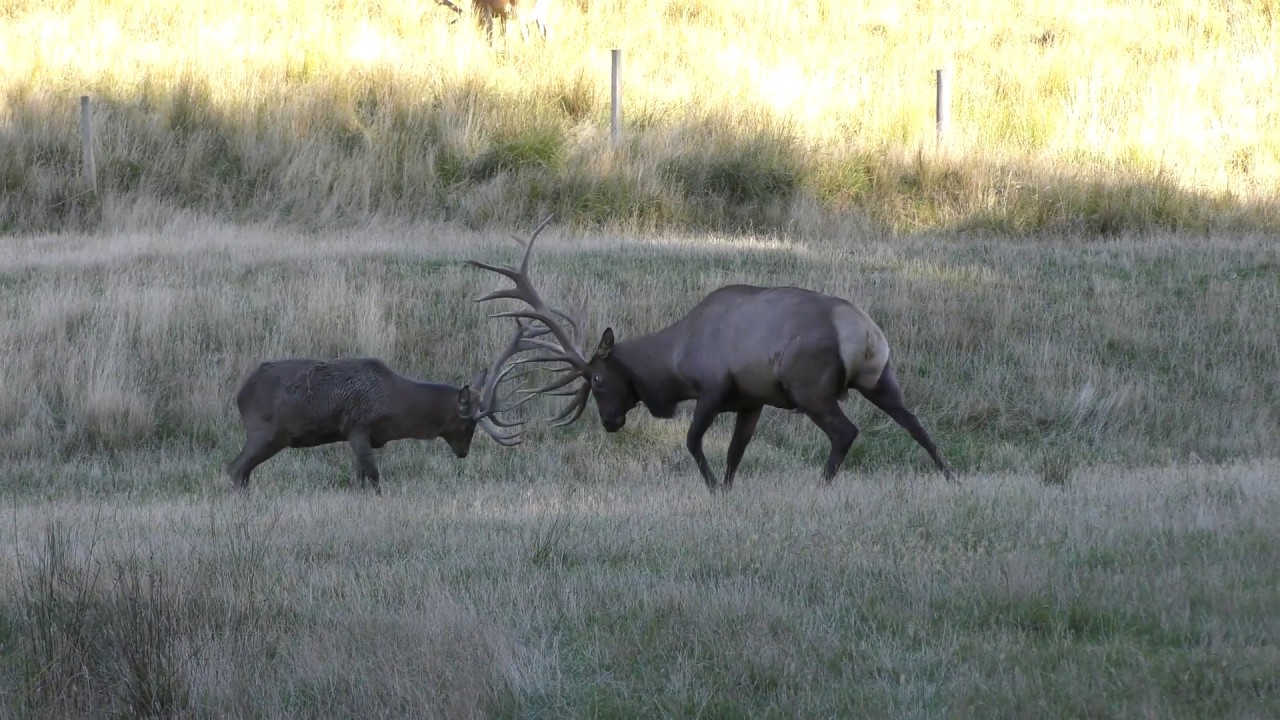Which is more difficult to hunt? A deer or an elk?
Jan 31st 2020
Is elk hunting easier than deer because of their size?

Simply put, no. Elk are more difficult to hunt than deer.
There are several reasons that elk are more difficult to hunt than deer. Here are some differences between elk and deer:
1. Size
Deer are smaller than elk. This difference in size gives elk more muscle mass than deer. Due to this, elk have the ability to cover much more ground at a much faster pace than any deer.
Deer, on the other hand, can run fast and are very agile, but can not cover ground as quickly as elk do. This gives the hunter an advantage when hunting deer. Deer often stay in the same square mile unless they are being aggressively hunted in open country.
You can hunt deer in a smaller area and worry less about trespassing due to the confines of their size and therefore their habitat.
2. Population
Deer populations are much larger than elk populations. Typically elk can be found in the Rocky Mountains, but their population is substantially smaller than deer populations. The deer population across the United States is estimated at 30,000,000. Elk populations, on the other hand, is estimated at 125,000. About half that population is divided between the Roosevelt and Rocky Mountain Elk. So by the numbers, deer are much more plentiful than elk.
3. Habitat
Deer habitat ranges widely across the United States. They're typically found in forested areas from the East Coast to the West Coast. Depending on the region, you can find various species of deer. Whitetail hunters have an abundance of public and often private land available to them. Whitetail hunting is one of the most common sports during hunting season. Mule deer are often found in more harsh environments, but their physical conditions and social interactions are similar to any other seer. A mule deer hunt can often take place in the same area you would also find elk.
On the other hand, big game such as elk has a very specific habitat. Typically found in the Rocky Mountains and the Pacific Northwest, they're very seldom found in the central United States and seldom found in the eastern United States. Public land access can be difficult to find, and their mobility means they are less likely to stay on public land for a long duration.
4. Social Interactions and Behaviors
Deer and elk interact differently. Deer can typically be found on their own in the forest. During open season, you will find pairs of deer bedded down together. This continues through the end of the rut. When fawns are born, you'll typically see them with their mother does, but you won't see many deer together very often.
You can find them while they are feeding or while they are watering. But as a rule, they're not a herd animal.
Elk, on the other hand, are a group animal. They are often found in herds. During elk season I have hunted bull elk which have been excluded from the herd. Typically this happens when a dominant bull elk runs a harem, they can often be challenged by a younger bull elk. If one of these younger bull elk defeat the dominant bull, then the old dominant bull will often leave the herd and live the rest of its life by itself. At which point had the younger bull will become the new leader of the harem. Archery hunters will often try to find bulls before the rut, this is the start of when a dominant bull will find a harem.
A cow elk will lead a herd if they are on the move. This makes them more difficult to hunt due to the fact that when the herd decides to move, they all move together and they will not scatter often. When you have a herd of animals, you sometimes have a very limited chance of a clean shot because of the way they are grouped.
Deer, even though they may group at times, they will be easier to hunt once you spook the herd. Deer will go off on their own and you can hunt them one on one. Whereas elk, if you spook the herd, the entire herd will take off until the lead, a bull or cow elk is wounded. When a lead cow elk is wounded and is unable to lead the herd, the herd does not know what to do, they will usually remain grouped but they will run randomly, and often sporadically. Sometimes they'll even stall and not run at all due to confusion. Sometimes you can break up a herd during this period. They often do not scatter but one or two elk, or groups of elk, have a higher tendency to break off from the herd when the lead cow is down.
Elk hunters in a hunting party typically will aim for the lead cow or dominant bull in order to confuse the herd and allow a larger opportunity for the hunting party to harvest their animals.
Why Elk are Harder to Hunt than Deer:
Based on these differences, I hope you can see why elk hunting is more difficult than deer hunting. I grew up hunting both deer and elk. Typically, I would buy an elk tag just because the opportunities were wide and random. I would actively hunt deer knowing that I could fill my fridge and freezer with a successful harvest.
Occasionally I would run across a herd of elk and you have an elk tag, you can harvest an elk. Elk hunting on its own is very difficult. I've done it several times never with much success. I've taken shots at several different elks, I was able to harvest my first cow elk last year. It was on private ground and in a large herd. The friend I was with was also able to harvest a bull elk from the same herd but after that herd started to run, there was no more opportunity to harvest more elk.
